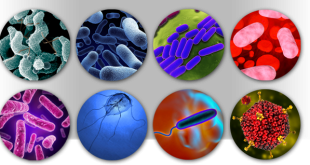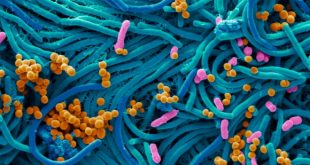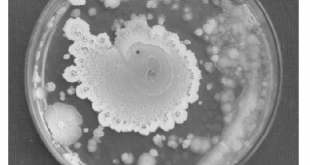Control of Microorganism by Heat
Heat generally appears to kill micro-organisms by denaturing their enzymes: the resultant changes to the three-dimensional shapes of these proteins inactivate them. Heat resistance varies among different microbes. These differences can be expressed through the followings;
- Thermal death point (TDP) is the lowest temperature at which all the microorganisms in a particular liquid suspension will be killed in 10 minutes.
- Thermal death time (TDT) Another factor to be considered in sterilization is the length of time required. This is expressed as, thermal death time the minimal length of time for all bacteria in a particular liquid culture to be killed at a given temperature.
- Decimal reduction time (DRT, or D value) is a third concept related to bacterial heat resistance. DRT is the time (in minutes) in which 90% of a population of bacteria at a given temperature will be killed.
Moist Heat Sterilization
High temperature combined with moisture is one of the most effective methods of killing microbes. Most heat kills microorganisms primarily by coagulating proteins denaturation, which is caused by breakage of the hydrogen bonds that hold the proteins in their 3-D structure.
Best safe and secure cloud storage with password protection
Get Envato Elements, Prime Video, Hotstar and Netflix For Free
Best Money Earning Website 100$ Day
#1 Top ranking article submission website
- Boiling: One type of moist heat ‘sterilization’ is boiling, which kills vegetative forms of bacterial pathogens, almost all viruses, fungi and their spores within about 10 minutes or faster. Endospores and some viruses however, are not destroyed this quickly. Some hepatitis viruses can survive upto 30 minutes of boiling and some bacterial endospores can resist boiling for more than 20 hours. Boiling is therefore not always a reliable sterilization procedure.
- Autoclaving: Autoclaving is used to sterilize culture media, instruments/ equipments and other items that can withstand high temperature and pressure. Sterilization in an autoclave is most effective when the organisms either are contacted by the steam directly or are contained in small volume. Generally the autoclave pressure is set at 15 lb/in2, when the temperature goes at 121°C for 20 minutes.
- Non-pressurized steam / Fractional sterilization: Selected substances that can not withstand the high temperature of the autoclave can be subjected to intermittent sterilization, also called tyndallization.
- Pasteurization: Pasteurization is a heat treatment process that destroys pathogenic microorganisms in certain foods, milk & beverages.
Three types of pasteurization
a) Low Temperature Holding (LTH)
Heating at 62.8°C for 30 minutes.
b) High Temperature Short-Time (HTST)
Heating at 71.8°C for 15 seconds.
c) Ultra High Temperature (UHT)
Heating at 148.9°C for 3 to 4 seconds.
Types of pasteurization will be thoroughly discussed in another section.
Dry Heat Sterilization: Dry heat kills by oxidation of chemical constituents of cells.
One of the simplest methods of dry heat sterilization direct flaming.
- A similar principle is used in incineration, an effective way to sterilize and dispose of contaminated paper cups, bags and dressings. Incineration of microbial samples on inoculating loops and needles using Bunsen burner is a very common practice in the microbiology laboratory. This method is fast and effective, but it is also limited to metals and heat-resistant glass materials. The flame of a Bunsen burner reaches 1,870°C at it’s hottest point and furnaces/incinerators operate at temperature of 800 to 6,500°C. Direct exposure to such intense heat ignites and reduces microbes and other substances to ashes and gas.
- Another form of dry heat sterilization is hot-air sterilization. Items to be sterilized by this procedure are placed in an oven. The dry oven is usually electric and gas coils that radiate heat within an enclosed compartment. Heated, circulated air transfers its heat to the materials in the oven. Generally, a temperature aof about 160°C maintained for nearly 2 hours ensures sterilization.
Control of Microorganisms by Radiation
Radiation has various effects on cells, depending on its wavelength, intensity and duration. Using radiation in sterilization is called cold sterilization as radiation procedures relatively little heat in the materials being irradiated. Thus it is possible to sterilize heat-sensitive substances.
Radiation that kills microorganisms is of two types:
- Ionizing radiation: Gamma Ray’s, X-rays and high energy electron beams are used. Gamma rays penetrate matter deeply but may require hours to sterilize large masses. High energy electron beams have much lower penetrating power but usually require only a few seconds of exposure. Low level ionizing radiation used in many countries for processing spices and certain meats and vegetables.
- Non-ionizing radiation: Non-ionizing radiation has a wavelength longer than that if ionizing radiation, usually greater than 1 nm. The best example of non ionizing radiation is Ultraviolet (UV) light. The Ultraviolet portion of the spectrum includes all radiation from 15-390 nm. The UV wavelength most effective for killing microorganisms, are about 260 nm as these wavelength are especially absorbed by DNA.
 Plantlet The Blogging Platform of Department of Botany, University of Dhaka
Plantlet The Blogging Platform of Department of Botany, University of Dhaka






I may need your help. I tried many ways but couldn’t solve it, but after reading your article, I think you have a way to help me. I’m looking forward for your reply. Thanks.